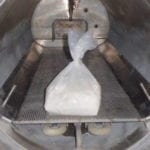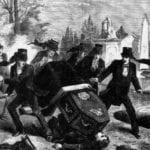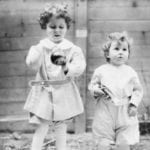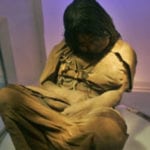 Misconceptions
Misconceptions  Misconceptions
Misconceptions  History
History 10 Amazing Roman Epitaphs
 Weird Stuff
Weird Stuff 10 Niche Subcultures That Are More Popular Than You Might Think
 Mysteries
Mysteries 10 Tragic Disappearances and Deaths in Joshua Tree National Park
 History
History 10 Ways Childhood Really Sucked in the Old West
 Music
Music 10 Name Origins of Famous Bands from the 1990s
 Religion
Religion 10 Biggest Turnarounds by the Catholic Church
 Weird Stuff
Weird Stuff 10 Unbelievable Times Laws Had Unintended Consequences
 Humans
Humans Ten Historic Women Who Deserve Way More Credit Than They Got
 Movies and TV
Movies and TV 10 Films That Spawned Major Lawsuits
 Misconceptions
Misconceptions 10 Phony Myths and Urban Legends That Just Won’t Die
 History
History 10 Amazing Roman Epitaphs
 Weird Stuff
Weird Stuff 10 Niche Subcultures That Are More Popular Than You Might Think
Who's Behind Listverse?

Jamie Frater
Head Editor
Jamie founded Listverse due to an insatiable desire to share fascinating, obscure, and bizarre facts. He has been a guest speaker on numerous national radio and television stations and is a five time published author.
More About Us Mysteries
Mysteries 10 Tragic Disappearances and Deaths in Joshua Tree National Park
 History
History 10 Ways Childhood Really Sucked in the Old West
 Music
Music 10 Name Origins of Famous Bands from the 1990s
 Religion
Religion 10 Biggest Turnarounds by the Catholic Church
 Weird Stuff
Weird Stuff 10 Unbelievable Times Laws Had Unintended Consequences
 Humans
Humans Ten Historic Women Who Deserve Way More Credit Than They Got
 Movies and TV
Movies and TV 10 Films That Spawned Major Lawsuits
10 Ways History Worked Children To Death
Work is for grown-ups, play is for kids; at least, that’s how it’s supposed to be. While letting children work to teach them meaningful life lessons can be a good thing, it’s another thing to put kids in harm’s way by letting them do dangerous jobs. Sadly, our history is full of examples of children risking their necks just to make a living. Let’s examine some of the more dangerous jobs that children have done throughout history—jobs so dangerous that even a grown man would have trouble with them.
10 Mudlarks
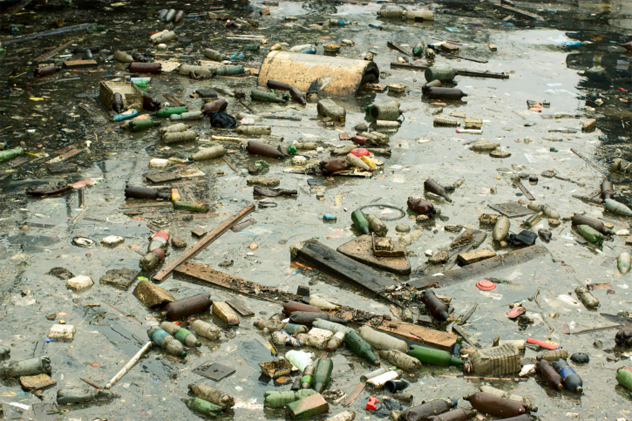
As London became increasingly urbanized during the Industrial Revolution, then the Victorian Era, waste and garbage reached heights of unbelievable proportions. Yet it was in trash that poor children found a way to survive. These little scavengers made their living by by collecting anything valuable that wound up in the River Thames. They usually waited for low tide before they waded through mud to sort through the trash, hence the name. Mudlarks were mostly young boys, although it was not an unusual sight to see young girls and old women knee-deep in mud also.
It was a back-breaking job with little reward in it—on a good day a mudlark could hope to find coal, iron pieces, and surplus wood. Finding jewels or anything really valuable was a rarity—mudlarks often had to compete with toshers, the men who scavenged the sewers. As the trash came through the sewers first, the toshers had a greater chance of finding jewelry and other valuable trinkets than the mudlarks.
Aside from being short-changed by the toshers, mudlarks also had to tread carefully, as any small wound while wading in the filth-riddled mud was a certain death sentence. Additionally, they always had to watch out for the tides—a small miscalculation meant that they could be washed away by the rising water in an instant.
9 Newsies
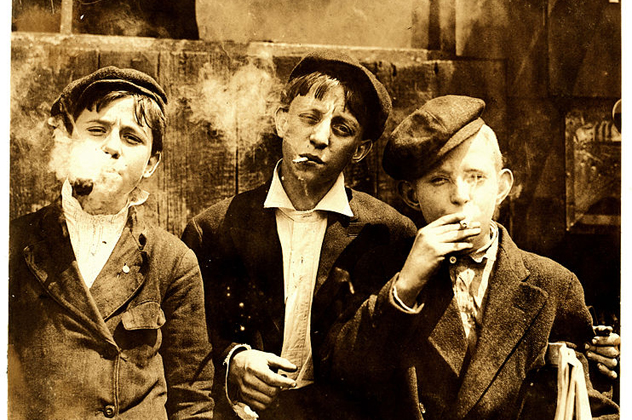
Contrary to popular belief, newspaper boys (or “newsies”) did not have the song-and-dance lifestyle that media often portrays. During the 1890s and the subsequent years leading up to the Spanish-American War, the rising newspaper industry exponentially increased the number of newsies out on the streets. Lured by the prospect of an easy buck, several young boys (and a few girls) turned to buying newspapers in bulk from several publications and selling them individually to customers on the street for a higher profit.
Along the way, newsies had to contend with several dangers in hawking their goods, one of which was fighting off other newsies for good spots on the streets. Although most newsies lived with their families at home, some of the more unfortunate ones had to sleep on their newspapers out in the open. A few boys also became well-acquainted with the criminal underworld and served as informers and go-betweens.
Probably one of the most life-threatening things newsies did was “flipping,” or jumping onto trams for free transportation. As one would imagine, several fell onto the railway and ended up with crushed limbs. It wasn’t an entirely bad ending—some of the newsies used their newfound disabilities to garner more sales from sympathetic customers.
8 Rat Catchers
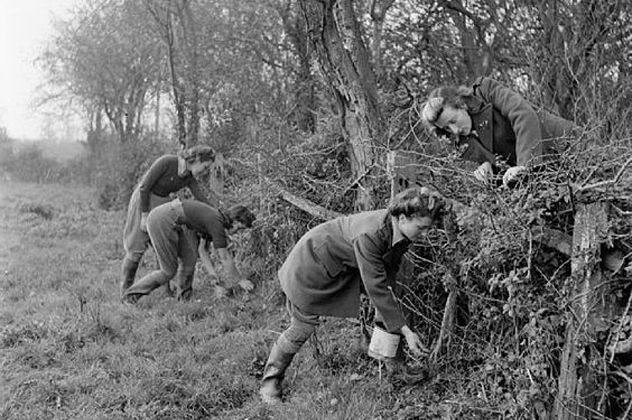
The increasing amount of trash wasn’t the only plague besetting the people of major cities in the 19th century. As always, the mountains of garbage became the perfect breeding ground for rats—which in turn became the perfect livelihood for rat-catchers everywhere.
As it turned out, just about everyone was into the business of catching rats, even children. The young rat catcher often brought along his trusted companion—a terrier—to catch and kill rats. Later on it became more profitable for the children to catch the rats and sell them alive for rat-baiting, a bloody sport that involved placing numerous rats inside a pit with a dog—bets would then be made on how fast the dog could kill all the rats.
Although it was a dirty job, rat-catching paid higher than the averages wages of the day. It was also possible for rat-catchers to go up the career ladder, as evidenced by one Jack Black. A rat catcher since his youth, Jack Black later became Queen Victoria’s Royal Rat Catcher and Destroyer of Moles.
7 Mule Scavengers
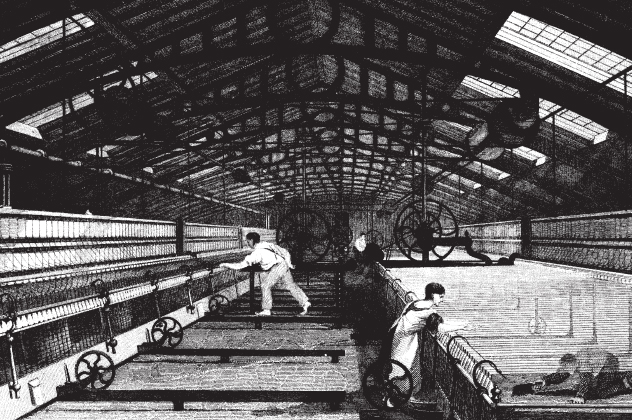
During the Industrial Revolution, mule scavengers became a regular feature of many textile mills in London. They were essentially small children who collected the cotton and cleaned the area underneath the spinning mules (machines used to spin cotton into thread). Keep in mind that we said spinning—the mules didn’t stop for the children. To avoid being crushed to death, the children often had to lie low and move very carefully while underneath the mules. A similar harrowing job inside the mill was that of the piecer—he or she had to lean over the spinning mules and “piece” together the broken strands of cotton.
As careful as children were around the machines, accidents just could not be avoided. In one of the most gruesome recorded accidents, a 13-year-old boy died after his head was completely crushed by a spinning mule. Several children also had their fingers and other body parts torn off—these were kept under wraps, because minor accidents were apparently not worth recording.
Aside from the unexpected amputations, the children were also prone to suffering psychological breakdowns due to the constant loud noise of the machines. Not only that, children who worked in the mills suffered from an abnormally high rate of respiratory diseases, thanks to the cotton and dust.
6 Pinsetters
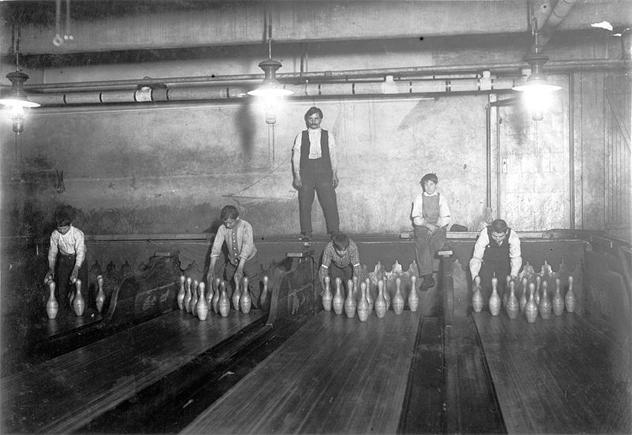
In the days before the automated pinsetter became a mainstay in bowling alleys, the job of putting the pins back in place was done by teenage boys. On paper, being a pinsetter looked boring and safe enough. However, it was a whole different story out on the lanes. For one, pinsetters had to be on constant alert for pins flying their way. They also faced the very real danger of a bowling ball being hurled right in their faces by inattentive bowlers.
What the pinsetters really had to watch out for, however, were the drunken bowlers—some would deliberately target a pinsetter just for kicks. To avoid injury, a pinsetter had to be quick and light-footed. The unfortunate few who weren’t fast enough ended up with bruised legs or busted heads—some were so seriously injured that they had to be picked up by ambulances. As if that wasn’t enough, pinsetters also had to endure covering several lanes if a co-worker was absent—a task that usually ended up with the pinsetter totally exhausted from the vigilance needed to avoid being hit with pins and bowling balls from all angles.
5 Crossing Sweepers
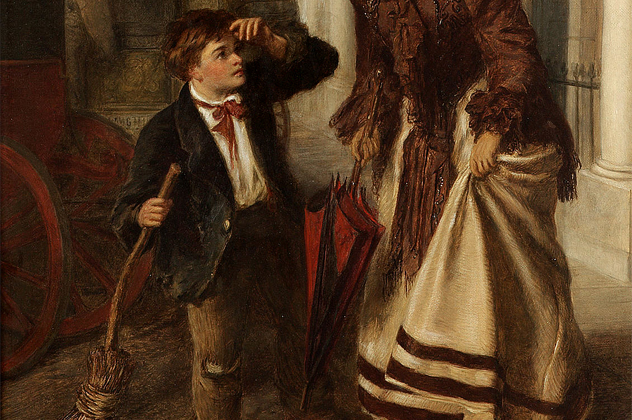
The Victorian Era just wasn’t a good time to be a kid. Aside from slaving away in the coal mines, children often picked up a few extra cents by working as crossing sweepers. Their job entailed cleaning up pedestrian crossings and other walkways for wealthy people in hopes of getting a tip.
Easy money? Far from it. Aside from the usual fighting for good spots, children had the inglorious task of cleaning up horse droppings—a major problem that plagued the world’s major cities at the time. Aside from all the defecation and urination, horse carcasses also became a usual sight on the streets. All of these provided good vectors for a whole range of diseases to which front-line workers (especially the children) were vulnerable.
Another danger crossing sweepers faced were the accidents. Horses figured heavily in several accidents back then. Collateral damage was also high—bystanders (again, usually the children) were at risk of being attacked by nervous horses.
The advent of the automobile eventually replaced the need for horses, and with the horses gone the children were swept out of a job.
4 Powder Monkeys
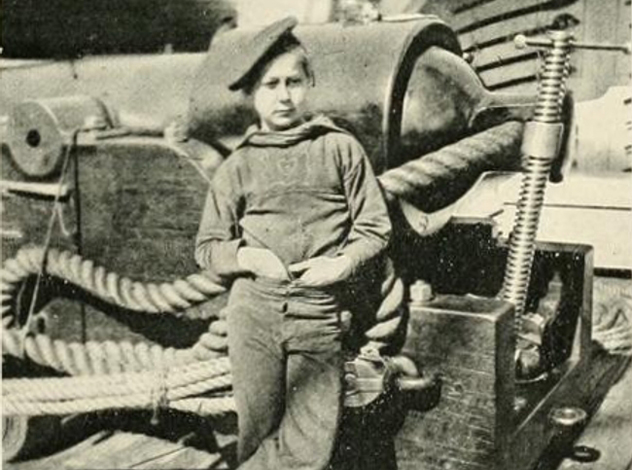
If you watched a fight between two ships in a swashbuckling pirate movie right now, you’d probably see a massive battle scene with ships firing a near-endless stream of cannonballs and bullets. What they don’t show you is that all this non-stop action is due in large part to the real-life behind-the-scenes workings of the powder monkeys.
The role of powder monkey was one the most underrated jobs on a warship—without them, it would be impossible to conduct a battle. As the name suggested, powder monkeys were usually young teenage boys in charge of bringing gunpowder from the ship’s storage rooms to wherever it was needed. Powder monkeys had to be particularly fast bringing the gunpowder—a slight delay could spell defeat for their side. They also had to be especially careful in handling the gunpowder and keeping it away from fire.
Due to the dangerous work conditions, powder monkeys were often forcibly recruited by pirates or legitimate navies. Some did enter of their own free will—which often happened during the American Revolutionary War, when boys joined up with either the Continental or British Navy.
3 Matchstick Dippers
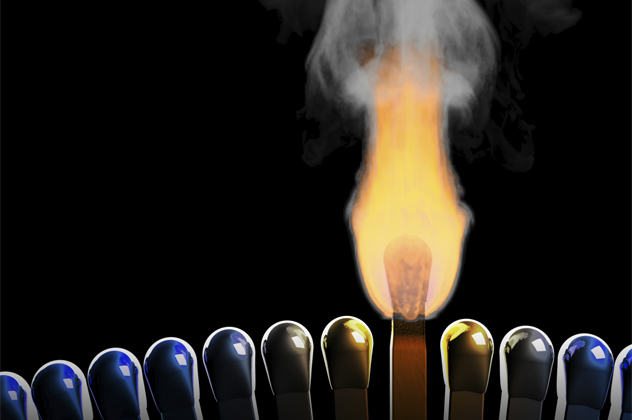
Remember when we talked about the life-threatening, disfiguring disease “phossy jaw” in a previous list? Officially known as “phosphorus necrosis of the jaw,” this disease could rip off someone’s jaw, leading to a massive infection and a slow, painful death. Prolonged contact with poisonous white phosphorus was the root cause of phossy jaw—and that’s exactly what child workers experienced during the Industrial Revolution
These workers—mostly young girls— worked by dipping the matchsticks into white phosphorus. The pay was poor and working conditions were even worse—beatings were a common occurrence. Not only that, white phosphorus clung to everything. The girls usually had to eat their lunches inside their work areas, which were covered in the substance.
Things got so bad that a group of girls working in a London factory staged a strike in 1888 and were successful in getting several concessions from their employers, including replacing white phosphorus with the safer red phosphorus. By 1912, the use of white phosphorus for matchsticks had been discontinued throughout the world.
2 Spies
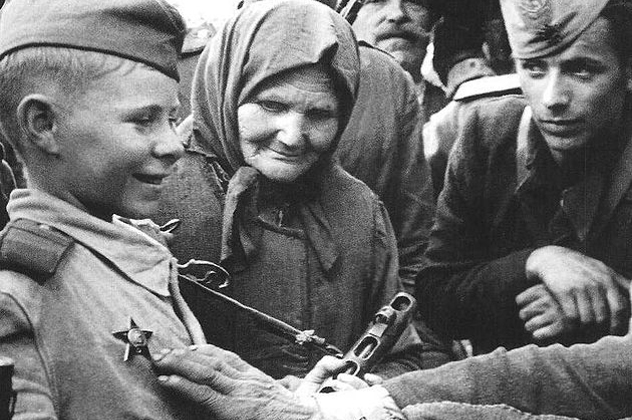
It’s a well-known fact that throughout history children have been used as soldiers in armed conflicts. Even today we have a huge number of child soldiers all over the world. Yet, in the dark shadows of history, children have also served as spies.
How long have there been spy kids? Maybe as old as conflict itself. During the Revolutionary War, George Washington had a large network composed of women and children who surveyed and sabotaged the enemy. At the time of the Civil War, one of the best-known spies happened to be working for the Confederates—the 17-year old Belle Boyd.
And while we may be more familiar with the massive battles of World War II, secret battles far away from the front lines were also being fought. Both the Nazis and Soviets employed thousands of children as agents behind enemy lines to wreak havoc among the enemy troops.
Various dictatorships have also used children to wipe out dissidents and protect their position. During the reign of Romanian dictator Nicolae Ceauscescu, his regime coerced children into working for the state police to spy on their own families and teachers. According to the records, at least 15 percent of Romania’s total child population worked as spies and informers for the regime.
1 Chimney Sweeps
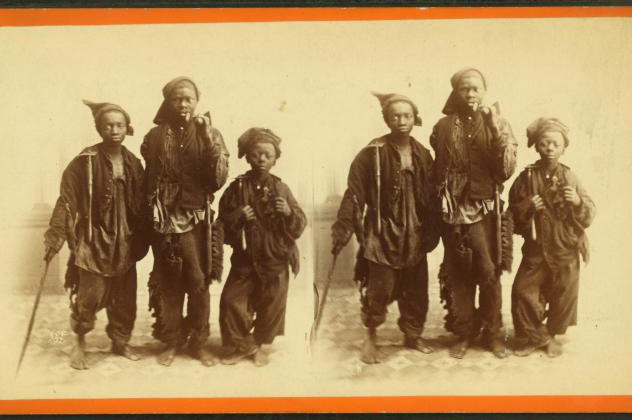
Though chimney sweeps have been in existence since as early as the 12th century, the profession achieved notoriety in 17th- and 18th-century Britain, with most of the attention centered on the young boys and girls who did the sweeping. Owing to their small size, children were perfect for climbing inside the flues. Adult chimney sweeps acquired their little apprentices either by buying them from their parents or the orphanages, or just outright kidnapping them.
To ensure that their wards performed well on the job, adult chimney sweeps often resorted to very questionable methods, such as starving the children to ensure that they remained thin. They also had the habit of starting a fire underneath while a child was still inside the flue—a scare tactic designed to make the little tyke climb up faster.
As you might guess, children suffered tremendously. Many succumbed to respiratory illnesses, cancer, and other infections brought on by soot and dirt. A few who did survive became mentally scarred for life (crawling inside small, dark spaces for a long time can do that to you). A 1760 law that tried to remedy this practice was widely ignored, and it was only in 1875, with the passage of another law, that the practice of sending children up into chimneys was finally regulated.
+ Blower’s Dogs
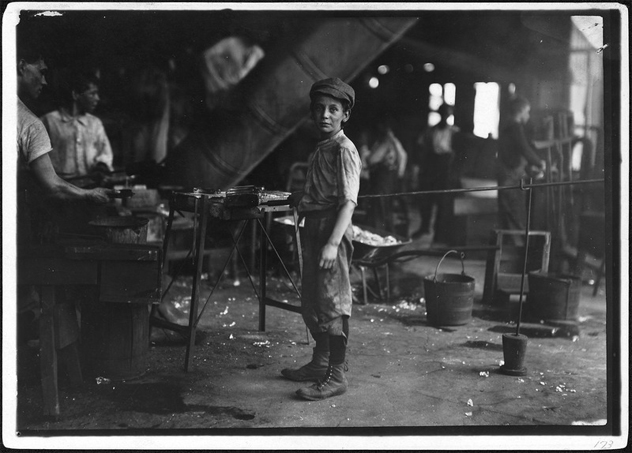
Just like their counterparts over at the textile mills and matchstick factories, children involved in glassmaking faced serious injuries and potential death every day. Derisively called “dog boys” or “blower’s dogs”—because they were trained to follow the adult glass blower’s whistle—these children handled and cleaned every piece of molten glass that the glass blower took from the furnace, a process that was repeated hundreds of times in a single shift.
Since pay for the adults was per completed piece of glass, they forced the boys to work quickly—a sure-fire recipe for disaster. In one accident, a 14-year-old boy was permanently blinded in one eye after being struck by a piece of flying glass. Not only that, children also had to look out for “blow-overs,” or glass dust—it caused excruciating pain once it got into the lungs or the eyes. Burns, dehydration, and tuberculosis were also commonplace. Many died from pneumonia, the result of the combination of working in intense heat and then walking home on a cold winter night.
While various laws were soon established that regulated the work inside the glass factories, the practice of using children as easy labor has unfortunately continued to exist in several parts of the world today.
Marc V. is always open for a conversation, so do drop him a line sometime.

